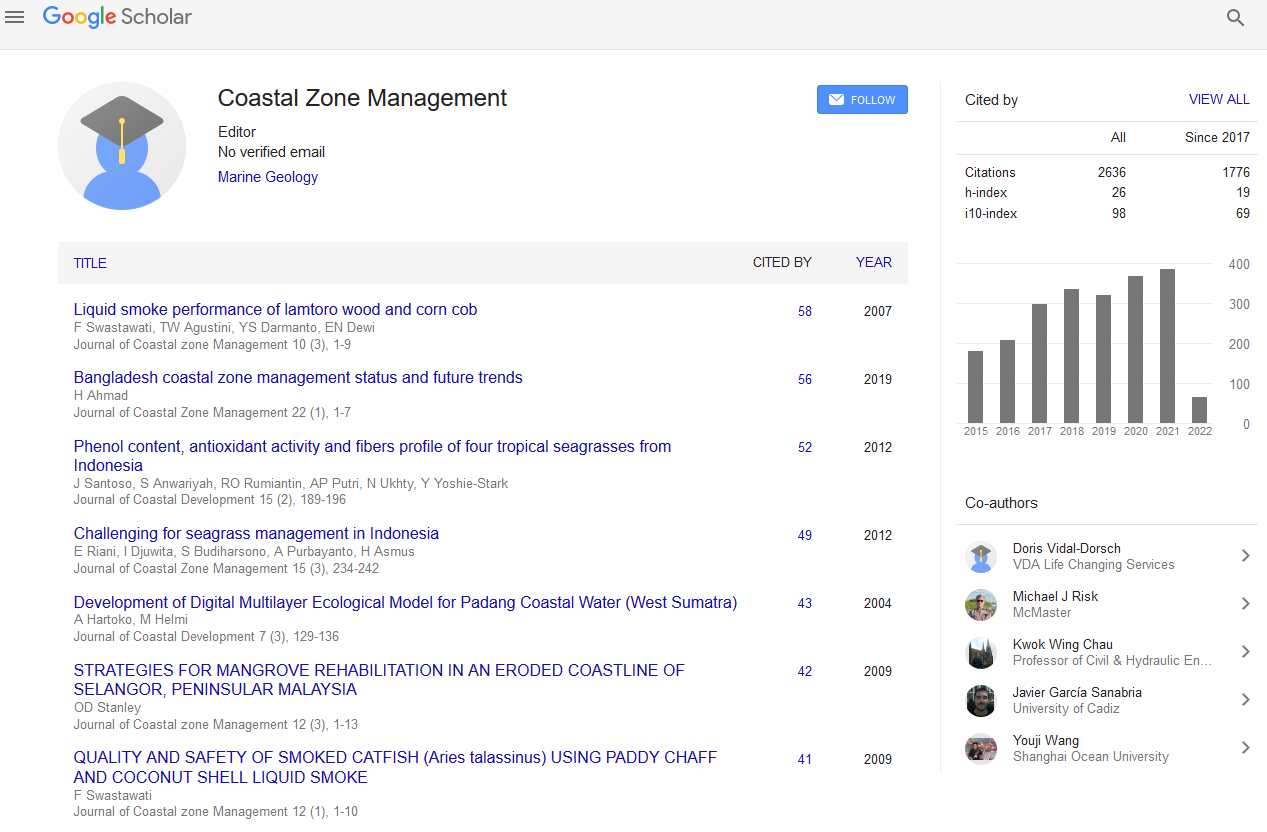Indexed In
- SafetyLit
- RefSeek
- Hamdard University
- EBSCO A-Z
- OCLC- WorldCat
- Publons
Useful Links
Share This Page
Journal Flyer

Open Access Journals
- Agri and Aquaculture
- Biochemistry
- Bioinformatics & Systems Biology
- Business & Management
- Chemistry
- Clinical Sciences
- Engineering
- Food & Nutrition
- General Science
- Genetics & Molecular Biology
- Immunology & Microbiology
- Medical Sciences
- Neuroscience & Psychology
- Nursing & Health Care
- Pharmaceutical Sciences
Abstract
The Application of Glyroxyl as Decontamination and Disinfection Agent for the Preservation of Fisheries Product
Y.S. Darmanto and Tri Winarni Agustini
Fisheries products are regarded as perishable food. Fresh prawn is one of the most valuable fisheries
products and its demand increases especially in developed countries. Handling and preserving of fresh
prawn has been investigated to keep the quality. Glyroxyl has been successfully used as
decontamination agent in the fish sector in the Netherlands. Apart from its use as decontamination
agent, glyroxyl has been proved to be an efficient disinfectant. Due to its safe character, it is allowed to
put glyroxyl in foodstuff directly, provided that the prescribed concentration is respected.
This study is aimed to investigate the effect of different concentration of glyroxyl (0, 0.3 and
0.5%) on the preservation of fresh prawn. The sample used was white shrimp prawn (Penaeus
monodon). The samples were soaked in glyroxyl solution with different concentrations. The analyses
were conducted for organoleptic, Total Plate Count (TPC) and E. coli at 0 and 3 days storage at
refrigerated temperature.
The results showed that the use of glyroxyl solution (0%, 0.3% and 0.5%) has no effect on the
organoleptic parameters of the sample (appearance, color and flesh). However, after 3 days of storage
the effect of glyroxcyl became apparent especially for 0 % glyroxcyl treatment. The number of E. coli
showed that application of glyroxyl could prevent the growth of E. coli and reduce the number of E. coli
in the samples. In addition the E. coli obtained was less than number < 3 / < 3 in all samples after 3
days storage. Increase in glyroxyl concentration resulted in the decrease of bacterial number (TPC)
both for 0 and 3 days storage.

